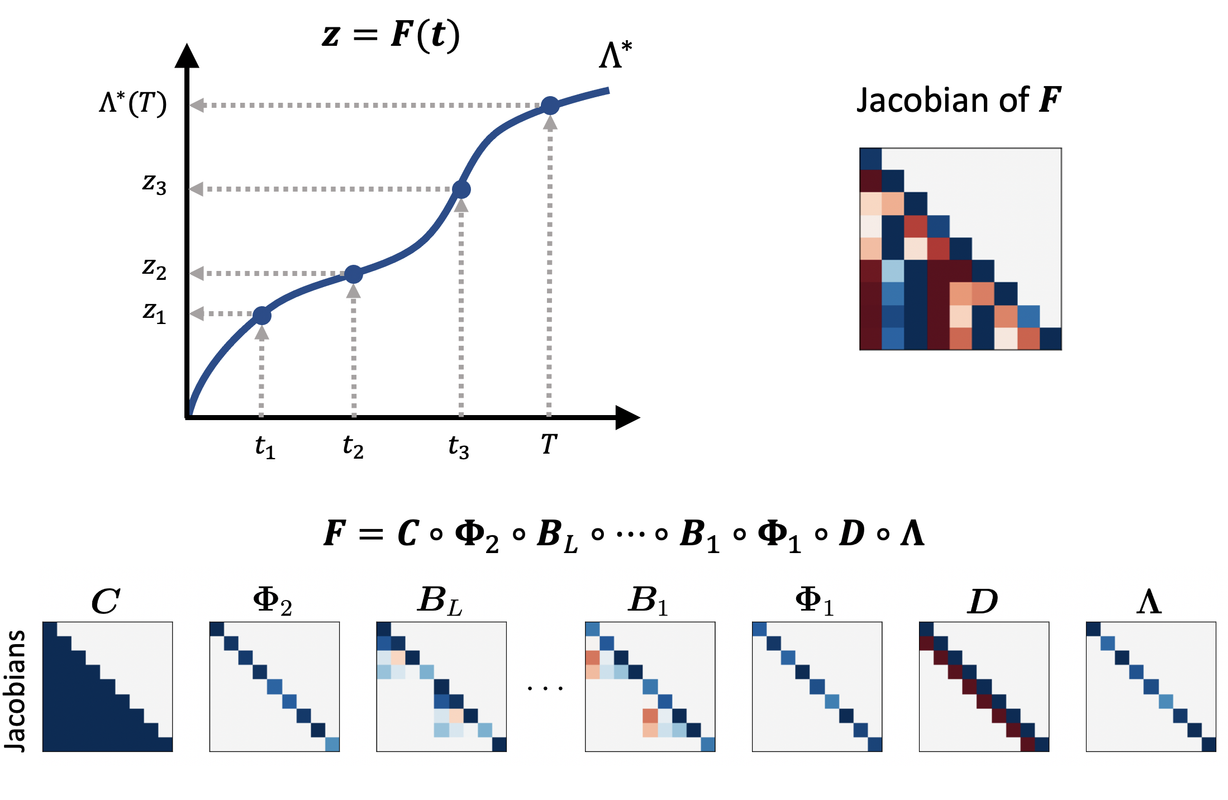Fast and Flexible Temporal Point Processes with Triangular Maps
This repository includes a reference implementation of the algorithms described in "Fast and Flexible Temporal Point Processes with Triangular Maps" by Oleksandr Shchur, Nicholas Gao, Marin Biloš and Stephan Günnemann (Oral, NeurIPS 2020).
Temporal point processes (TPPs) allow us to define probability distributions over variable-length event sequences in some time interval [0, t_max]. In our paper, we show how to define TPPs using invertible transformations, similar to normalizing flows. The code includes new parametrizations for several existing TPPs as well as a new, more flexible model. Our parametrizations allow to both draw samples & compute likelihood in parallel, which leads to signficant speedups compared to traditional RNN-based models.
The following models are available in ttpp.models:
Inhomogeneous Poisson ProcessRenewal ProcessModulated Renewal ProcessTriTPPAutoregressive(RNN-based TPP with slow sampling)
Requirements
The code is written in Python version 3.7 and was tested on Ubuntu 18.04. The code requires PyTorch version 1.5 with CUDA enabled. Other requirements are listed in requirements.txt.
To install the library run
pip install -e .
The datasets used in the paper can be found in data/.
Usage
Jupyter notebooks reproducing the experimental results can be found in the notebooks/ folder:
You can also train the model using command line. For example, to train the TriTPP model on the taxi dataset run
python scripts/experiment.py taxi TriTPP
To see the command line arguments, use
python scripts/experiment.py --help
Cite
Please cite our paper if you use this code or data in your own work:
@inproceedings{shchur2020fast,
title = {Fast and Flexible Temporal Point Processes with Triangular Maps},
author = {Shchur, Oleksandr and Gao, Nicholas and Bilo\v{s}, Marin and G{\"u}nnemann, Stephan},
booktitle={Advances in Neural Information Processing Systems (NeurIPS)},
year = {2020}
}


![[NeurIPS 2020] Blind Video Temporal Consistency via Deep Video Prior](https://github.com/yzxing87/pytorch-deep-video-prior/raw/main/example/example_in.gif)


